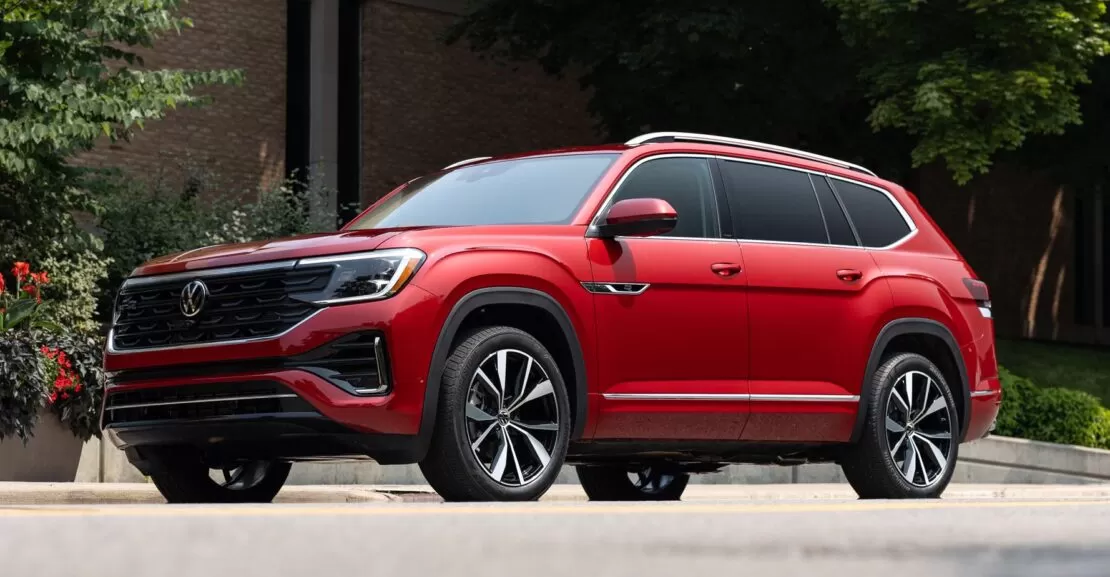Starting in 2017, Volkswagen introduced the Atlas to the United States market, primarily catering to American families. The 2024 Volkswagen Atlas has undergone significant changes, addressing various shortcomings from its initial release. In this comprehensive review, we delve into the updates and improvements of the 2024 Volkswagen Atlas and its counterpart, the Atlas Cross Sport.
The first noticeable change lies in the redesigned front end, featuring all-new LED headlights and a refreshed front fascia. This revamped design gives the Atlas a more contemporary look, signaling a shift towards a modern aesthetic. The addition of distinctive LED signatures not only enhances visibility but also adds a touch of sophistication to the vehicle’s appearance, hinting at Volkswagen’s future design direction.
While the exterior changes are prominent, the driving dynamics remain largely unchanged. However, Volkswagen has introduced a new engine option—a two-liter four-cylinder engine that focuses on delivering both torque and efficiency. With 269 horsepower and 273 pound-feet of torque, paired with an 8-speed automatic transmission, the Atlas offers a smoother and more responsive driving experience.
Moving inside, Volkswagen has addressed one of the previous model’s major drawbacks—the interior. The 2024 Volkswagen Atlas boasts a revamped cabin with a larger 12-inch infotainment screen and a 10.25-inch digital display for enhanced convenience and connectivity.
Moreover, Volkswagen has reintroduced physical buttons, catering to those who prefer tactile controls. Additionally, the interior materials have been upgraded, offering a more premium feel and improved comfort for passengers.
One of the standout features of the Atlas is its spacious interior, especially in the second row, which provides ample legroom and headroom for passengers. The availability of optional heated rear seats adds to the overall comfort and convenience, making long journeys more enjoyable for everyone on board.
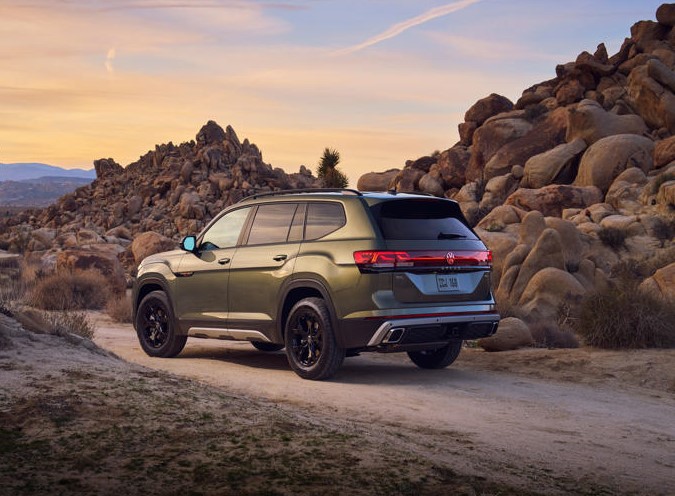
While the exterior and interior updates are commendable, the driving experience remains consistent with its predecessor. The 2024 Volkswagen Atlas delivers a comfortable ride, albeit lacking the sporty handling found in some competitors. However, Volkswagen offers the Atlas Cross Sport for those seeking a sleeker design with fewer seats, catering to varying preferences and needs.
The 2024 Volkswagen Atlas represents a significant improvement over its predecessor, addressing key areas of concern such as interior quality and technology features. While it may not lead the pack in terms of performance or features, it strikes a balance between functionality, comfort, and affordability—an approach that resonates with Volkswagen’s commitment to delivering practical and reliable vehicles for families.
Table of Contents
Volkswagen Atlas 2024: analysis and test drive of this three-row SUV
The 2024 Volkswagen Atlas, a three-row SUV, hit the market in 2017 to meet the needs of American consumers. Since its launch, it has managed to meet the expectations of those looking for a vehicle with ample interior space, ideal for large families.
Now, the 2024 Volkswagen Atlas model brings with it updates that focus mainly on the interior, to directly compete with other midsize SUVs on the market.
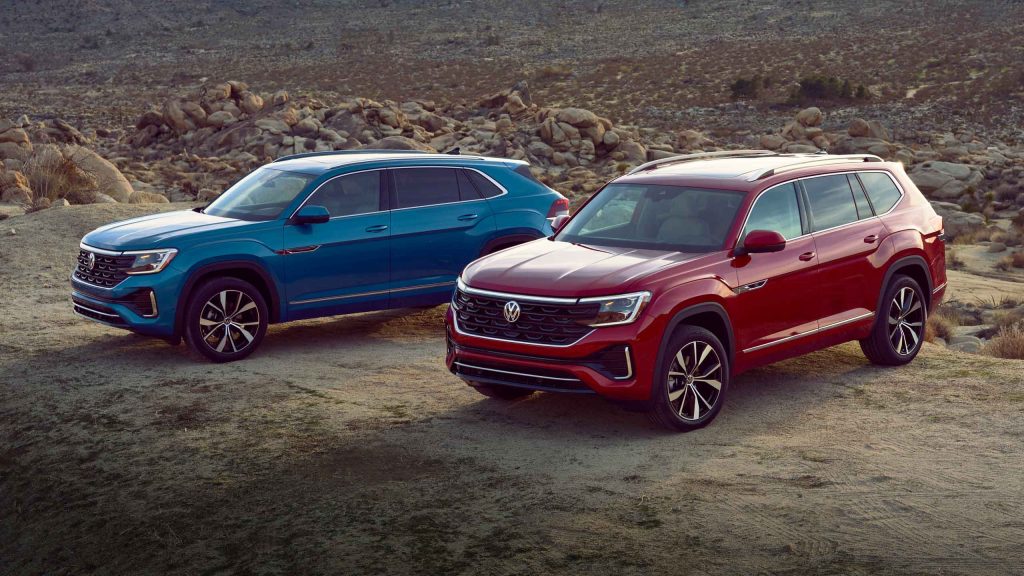
One of the most notable improvements is the quality of the materials used in the cabin, which now include new finishing options, offering a feeling of luxury and sophistication, elevating the driving experience to a higher level even though it is a family car.
However, there is one negative point that stands out in the 2024 Volkswagen Atlas: the infotainment system, which is complicated and frustrating to operate due to its sensitivity to touch. Although the goal was to provide an intuitive experience, there were perceived difficulties in navigating the different functions and settings.
Configurations for 2024 Volkswagen Atlas
In terms of performance, the 2024 Volkswagen Atlas is equipped with a 2.0-liter turbo engine, replacing the old 3.6-liter VR6 engine that will no longer be offered. Although this new engine is powerful and efficient, surpassing its predecessor, its performance may be modest compared to other similarly sized SUVs on the market. Yes
In addition to the engine, the chassis offers a comfortable ride suitable for the needs of a family. The suspension is designed to absorb road bumps, providing a smooth and pleasant ride for all occupants. The steering is also precise, making it easy to maneuver in tight spaces.
In terms of interior space, the 2024 Volkswagen Atlas remains one of the most spacious three-row SUVs in its category. With seating for up to seven or eight passengers, depending on configuration, this vehicle offers ample leg and headroom in all rows. In addition, it has a generous loading capacity, making it an excellent option for families who need to transport a large amount of luggage or bulky items.
General Conclusions
The 2024 Volkswagen Atlas has managed to maintain its position in the three-row SUV market in the United States. Although it features some interior improvements and more efficient performance, it still faces challenges with its infotainment system.
Its spacious interior, comfortable chassis, and generous cargo capacity make it an attractive option for those looking for a versatile and family-friendly vehicle. Despite its modest performance, it remains a reliable option for everyday use.
Overview & 2024 Volkswagen Atlas specs
How interesting that in the space of two months, we had three SUVs made for the North American market with plenty of space and three rows of seats. Almost as curious as Volkswagen’s decision to update this model, instead of presenting a new generation.
This is the 2024 Volkswagen Atlas Cross Sport, which is known as Volkswagen Teramont in other markets, and which appears with a refreshed design, a cabin with more technology, and four-cylinder engines only.
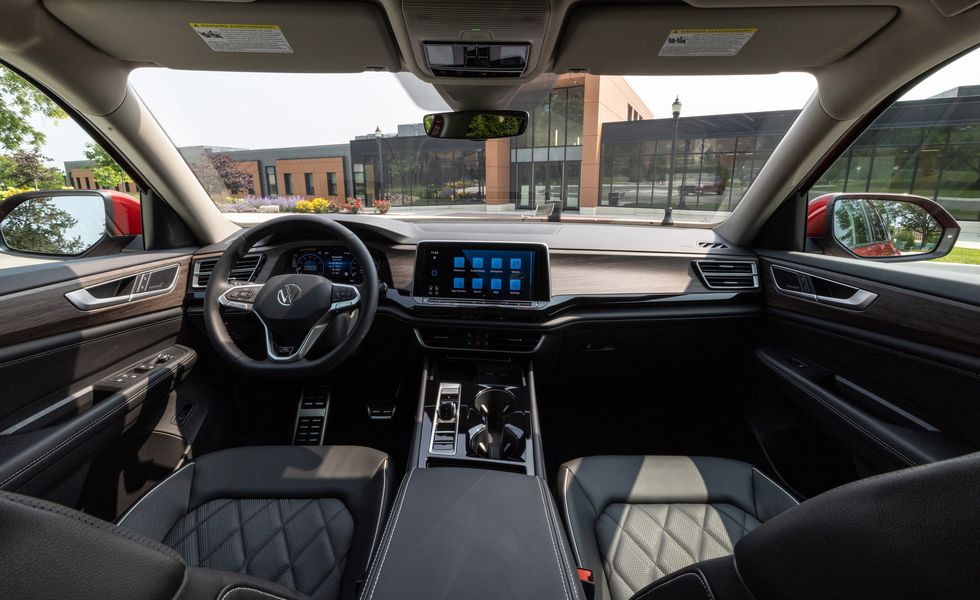
The VR6 engine that Volkswagen itself patented and used for years will no longer power the Atlas 2024, and surely when the Teramont (or Tavendor) is updated this engine will be absent. It is not the first time that Volkswagen has removed the presence of this engine, but considering that only the Latin Teramont and Chinese Audi Q6 use it, I doubt it will appear in other models in the future. The truth is that a four-cylinder turbo does the same thing more efficiently.
Goodbye to VR6 Again
That is precisely the formula that Volkswagen applies in the 2024 Volkswagen Atlas: four-cylinder engines that already power its entire range, including the same previous Atlas/Teramont. This time it will be a single flavor of the 2-liter EA888 engine with TSI technology, tuned to produce 269 horsepower and 370 Nm of torque.
Similar numbers to the 3.6-liter VR6 that developed 270 hp and 361 Nm of torque. An 8-speed DSG remains the only option, and the drive can be front or all-wheel drive. Outside of minor suspension and mechanical refinements, it’s virtually the same Atlas that’s rolled in North America since 2017.
That Gasoline Cars Look Like Electric Cars
The large number of differences is concentrated in the external design and the cabin. Outside you will find a redesigned front, with an LED bar and headlights with a C-shaped light signature. The badge is also illuminated, but only for the most equipped models.
At the rear, there is also an LED bar and redesigned headlights. The wheels have a new look and sizes ranging from 18 to 21 inches. And to be more aerodynamic, both Atlases have a new spoiler on the tailgate.
Moving to the interior is the most notable change. Volkswagen is transitioning to electric, meaning all of its gas-powered cars need to look like their volt-packed namesakes. This is most noticeable in its interiors, with larger screens (12), few physical buttons, steering wheels with touch controls, and digital instrument panels. The ambient lighting gives this Volkswagen a more upscale touch, timidly bringing it closer to an Audi.
You can’t miss the USB type C ports (six of them) and wireless cell phone charging. Even the dashboard has appliqués of the fake wood that is so popular in the US. The seven-passenger Atlas and five-passenger Cross Sport will arrive in sales rooms in the region in mid-2023, extending the life of a model that more than It will surely be electric in its next generation.
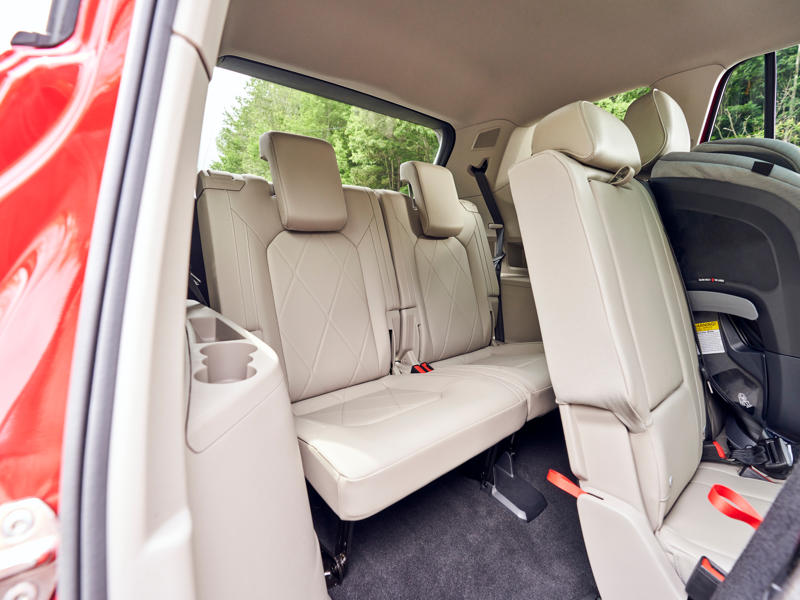
What’s the new 2024 Volkswagen Atlas?
The renewal of the 2024 Volkswagen Atlas model is profound. They renew the exterior style, greatly improve the interior, update the infotainment system, and add a new 4-cylinder turbo engine, the only option available now.
What does it look like from the Outside?
Volkswagen had designed the Atlas with the North American consumer in mind. Its robust exterior appearance and large components sit well on roads full of imposing, huge vehicles.
The 2024 Volkswagen Atlas front update is notable, with a new grille and LED headlights, a new dashboard with integrated air intakes that reinforce the wide stance, plenty of shiny metal trim, and a large VW logo. The rear spoiler is now larger, making it look sleeker there, helped by the lighting that mimics the front.
Technology and Security
In the center of the dashboard, we find a 12-inch (30 centimeters) floating screen surrounded by… Well, almost for nothing. The physical buttons are still in the extension phase. Here we find only four, all to activate menu functions on the screen such as climate, driving modes, assisted parking system, and advanced driving assistance systems (ADAS).
Although this approach from Volkswagen (like that of many other manufacturers) ensures a nice, clean-looking cabin, the absence of physical controls always results in distraction behind the wheel.
The 2024 Volkswagen Atlas is adding additional safety features across the Atlas range, in what the manufacturer calls IQ. Drive. They include as standard here one of the most useful features in my opinion, the blind spot monitor, an option that most manufacturers insert in additional packages for an added cost.
Volkswagen’s Travel Assist system is also included as standard and uses adaptive cruise control and lane keep assist for semi-autonomous driving. The system worked quite well during the test, but it is still far from the leaders in this technology.
How do you drive?
The 2024 Volkswagen Atlas features a new 2.0-liter turbocharged four-cylinder engine that produces 269 horsepower. They leave aside the previous lower-power four-cylinder and the 276-horsepower V6. An eight-speed automatic transmission is standard, and with the new engine, the Atlas’ maximum towing capacity remains at 5,000 pounds, the same as with the V6 engine.
Although the new engine improves acceleration, it may not feel very agile at the start, but when it sets gear, it is a good craft for long journeys, especially on highways. The suspension offers a supple ride and does a good job of absorbing road imperfections.
By activating Sport mode (always via the touch screen) the Atlas raises the revs to reduce minimal turbo lag and makes the most of the 8-speed automatic gearbox.
All-wheel drive is not standard but can be added on any of the trims. Including it slightly decreases fuel efficiency, which is 23.5 miles per gallon or 10 liters per 100 kilometers, in combined driving with regular gasoline. This consumption is average for similar vehicles.
Which one should I choose?
The 2024 Volkswagen Atlas is available in two bodies, the Atlas with three rows of seats and the Atlas Cross Sport with two rows. There are five trims to choose from: SE, SE with Technology, SEL, SEL R-Line (only available as Cross Sport), and SEL Premium R-Line.
An Atlas SE starts at $37,725, rising to $52,455 for the range-topping SEL Premium R-Line like the one in our test. The Cross Sport versions cost about $1,000 less in each trim.
Who are you competing Against?
Competition is fierce in the midsize SUV segment. The already mentioned Kia Telluride and Hyundai Palisade are joined by the Mazda CX-90, Honda Passport, Toyota Highlander, Subaru Ascent, Chevrolet Traverse, and Jeep Grand Cherokee to name just a few.
Concluding
Since its debut in 2018, the Atlas has found good reception among consumers and has been a sales success for Volkswagen. Thanks to the exterior, interior, and under-hood improvements received in the 2024 Volkswagen Atlas, the VW Atlas will remain competitive in one of the most saturated segments, that of 3-row SUVs.

